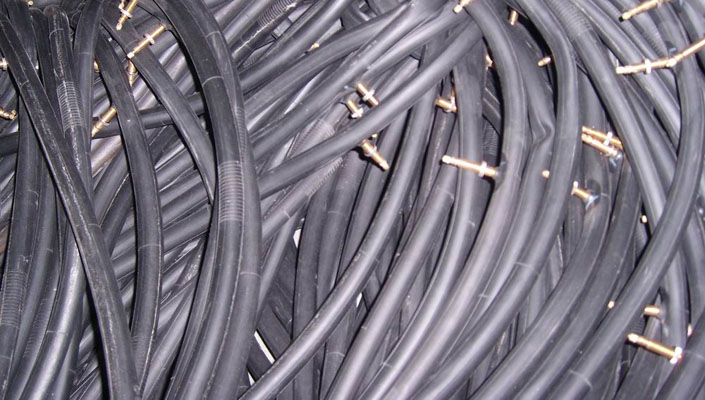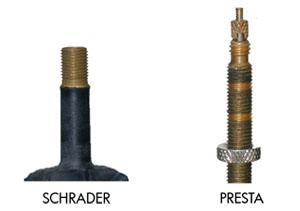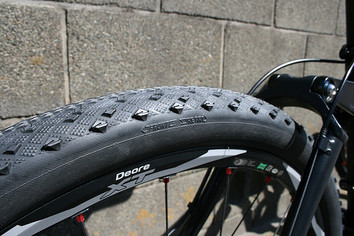Of all the things to look at in a bike shop, the best bet is you won't be admiring inner tubes. Firstly, you already know which inner tube is needed for your bike and secondly, you probably don't feel the need to know what all the other tubes are for! They're all pretty much the same, right?
WRONG.
So before you head home with a handful of the wrong tubes, have a read of our guide to picking a tube below. soon you'll be arguing with the best of them when the conversation heads towards the butyl balloon in your tire.
History
Before World War II, inner tubes were made from a natural material called latex, which was harvested from certain tropical trees. When the supply of latex became unreliable during the war, a substitute had to be found. Butyl (a synthetic rubber) inner tubes were born, with bicycles and vehicles turning to the superior alternative. Nothing much has changed since, except that some cyclists still prefer a latex inner tube over a butyl one.
The perceived benefits of a latex tube lie in its lighter weight. That's about it really, as the more porous latex tube needs to be inflated more often and can cost slightly more than a butyl one. A butyl tube is far more accessible in the cycling market, and only weighs a few grams more than latex. The benefit in butyl is that it holds air far better than latex, and some riders even perceive it as being more durable in the event of a rim pinching the tube.

So many sizes!
Bicycle inner tubes come in a variety of sizes to cater for all the different bikes you'll see out and about. From road bikes to commuters, mountain bikes to kids bikes, and every hybrid cruiser you can imagine - there's the right sized tube for them all. Inner tubes vary in circumference as well as width, with both of these measurements shown on the tube box. This, of course, relates directly to the diameter and width of the particular tire that is on the bike. There are a huge number of tube sizes as such, but the most common ones are listed below, all of which will be stocked by your local bike shop.
Kid's Bike Tube Sizes
Kid's bike tubes range from 12" through to 16", 20", 24" and lastly a 26" tube, which is also used on adult bikes. These tubes usually don't require an accurate width measurement, as the bikes tend to be mostly universal in sizing across brands. Just get the diameter right and you will get the correct tube.
Mountain Bike Tube Sizes
Mountain bike tubes range in size from 26" through to a 27.5" and 29". MTB tubes must be the correct width as well - also measured in inches. This is to allow the tube to expand to the correct size for your tires, and can range from as narrow as an inch right up to a tire width of 2.5" or greater. If you had a 26 x 2.3" tire, you would need a 26" tube that can expand to a width of 2.3".
On mountain bikes there is always some room to maneuver here. You could use a narrower tube, like a 2.125", and make it expand with extra air pressure, or alternatively you could squeeze a wider rated tube into the tire. The tube will then not have to expand as far to inflate and fill the tire.
NOTE:
Most tubes will have their width range on the box, shown as 26 x 2.1 - 2.4" meaning the 26" diameter tube is suited for a tire width from 2.1" to 2.4").
Get the diameter right, then look at the width and you can't go wrong!
Road Bike Tube Sizes
Road bikes and some flat bar commuters are shown as having a size of "700C." This comes from an old French system referring to the tire diameter of 700mm (or about 27"). But because of varying tire widths, related height profiles, and therefore diameters, the 700C label today refers to tires as they fit onto the standardized wheel size.
Road tubes come in different widths, but not as broad a range as mountain bikes. Sizing width may vary from 18c through to 28c, meaning 18mm through to 28mm. Check your tire sidewall for width, and choose the right tube accordingly - shown as 700 x 23c etc. A typical road tube box may say 700-18/23c or 700-25/32c. Make sure your tire fits within the range - easy!
NOTE:
While 700C and 27" tires (found on some older road bikes) are different and not interchangeable, the sizes are close enough for stretchy tubes that most "700C" tubes are suitable to fit both and are often labeled as such.
DID YOU KNOW?
There is a universal tire sizing system from the International Organization for Standardization (ISO) created to eliminate some tire and tube sizing confusion. It does this by eliminating variable tire heights and instead references the 'nominal rim diameter' to which they'll fit. In this case, a 26" MTB wheel/tire is 559mm and a 700C road wheel/tire is 622mm.
Valve Types

Fortunately, the valve choice on tubes is dictated by your rims and can only be one of two options (or three options if you count the now antiquated 'Dunlop Valve' from yesteryear). The first valve type is your standard 'car valve' - the Schrader valve. You'd find a Schrader valve on some entry level mountain or general purpose 26" bikes, and on almost all kid's bikes. The Schrader valve is slowly being replaced by the Presta valve, which was originally found only on road bikes. To choose the correct valve, check to see what is already fitted to your bike.
The Presta valve is fiddlier the first time you use it, however, you'll soon get the hang of it. Most performance mountain and flat bar road bikes are fitted with Presta valves, as well as almost all road bikes. The reason for the preference of Presta over Schrader valves is this; a Presta valve can hold a higher pressure within a tube, unlike a Schrader valve. A Presta valve also requires a much smaller hole in the rim, and comes in various lengths, which brings us onto our next point!
Valve Length
Presta valves come in a variety of lengths to suit different depth rims. If you look side-on at your rim, the height you see in the rim profile is referred to as its depth. So a 30mm rim is considered a 'shallow rim' while an 80mm rim depth is considered to be quite a 'deep' rim profile. If you had a 40mm rim depth, you'd need to consider a valve length capable of protruding from the rim so you can attach a pump onto it. You might consider looking at a 60mm valve for your 40mm rims. You can also purchase a valve extender to overcome your super deep rim problems!
Special Purpose Tubes
There always has to be a special tube on the shelf which has gathered dust over the past ten years. This would usually be a thorn-proof tube (thicker) or a self-sealing tube (filled with puncture sealant). Testimonials on these types of tubes vary, with some people swearing by them. If considering these options, keep in mind a thorn-proof tube can be so thick it's almost impossible to install. A pre-filled sealant tube is also questionable in performance because sealants all expire over time, meaning the tube you bought 6 months ago has probably lost all sealing capabilities... You are best off installing the sealant yourself, and changing it every 6 months.
Next time you shop for inner tubes, it'll be ten times the fun and almost as exciting as the time you bought your bike! Honestly though, it's just good to know which tube you need, seeing as you only use them in emergencies while out riding. It might not be exciting stuff, but it's the difference between riding, Ubering, or catching a taxi home.

RELATED ARTICLE:
Get a Grip! Top 5 Mountain Bike Tires
Changing tires has perhaps the greatest impact on "in the saddle" bike performance than any other upgrade short of buying a new bike! Having confidence in your tire grip is crucial to riding through corners at speed and can completely change the way you handle your bike in all situations... READ MORE



